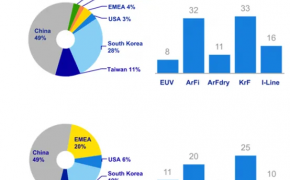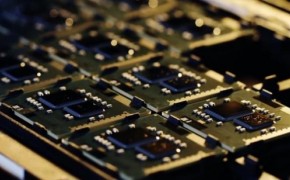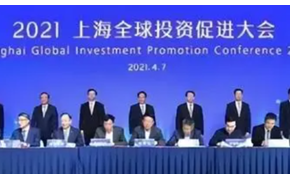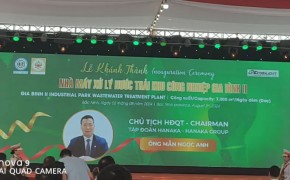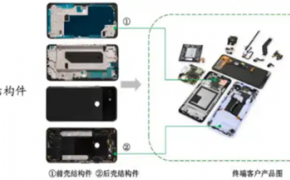半导体产业发展,带动对有效满足基础设施和服务要求的厂房需求增加,被评为将对工业地产领域产生影响。
新加坡星狮地产(越南)(Frasers Property Vietnam)住宅地产部经理张安阳表示,今后,各工业区内各种生产的需求,研究中心、实验室,甚至会展中心等的需求将会增加。加上对数据、技术基础设施拥有需求的电商等新产业将需要工业区规划的变化。
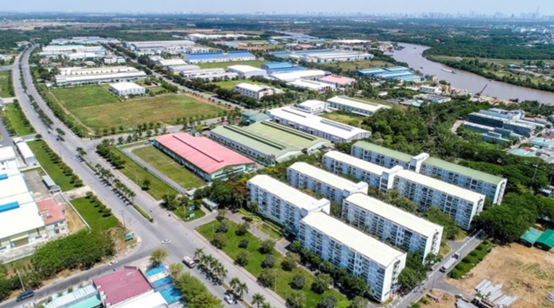
张安阳表示,新加坡星狮地产(越南)正研究成立服务半导体产业的研究中心,并正为该需求准备土地。在越南正逐渐成为半导体产业的投资乐土的背景下,工业地产开发商不断准备各种资源。
半导体制造被定位为推动越南发展成为繁荣国家的动力。第一太平戴维斯(越南)(Savills Viet Nam)预计,截至2024年底,越南半导体产业规模将超过61.6亿美元,把越南发展成为多家全球半导体企业的重要制造中心。
荷兰一些半导体企业也开始对越投资,BE Semiconducter Industries N.V已获得对胡志明市高科技园区的投资证书,项目第一期投资资金超1150亿越盾,用于投资和租赁厂房。
最近,鸿海精密工业股份有限公司(Foxconn)公布在越南北宁省南山-合岭工业园开展总额达3.83亿美元的项目。这是生产、组装和加工印刷电路板(PCB)项目,年均产品产量279个,占地面积14.26公顷,投资最近超9.4万亿越盾(约合3.833亿美元)。
第一太平戴维斯越南商业租赁部高级总监托马斯·鲁尼表示,半导体生产和组装投资需求带动寻找满足半导体产业关于基础设施、服务,如高速因特网、有效的水处理系统等要求的厂房和工业区的需求增加。
南部各省租赁工业地产的客户主要是从事橡胶、塑料、食品、饮料等行业的企业,而北部主要为从事电脑、电子和电气产品等的企业。因此,托马斯·鲁尼认为半导体投资浪潮的发展,将为北部工业地产发展注入动力。
第一太平戴维斯越南同时认为,为了迎来流入工业地产的资金,各地方和企业需完善政策机制、基础设施和人力资源,更好满足该产业较为严格的需求。托马斯·鲁尼先生表示,半导体产业需要巨大的电量。因此,越南需推进实施大规模能源基础设施项目。
最近,越南软件与信息技术服务协会成立了半导体工业发展委员会,旨在汇聚各位专家、企业和伙伴,通过培训活动共同推动这一产业发展;进行知识宣传和普及;加强合作与对接;建议各级政府为国内外投资商创造便利条件。
前不久5月29日在河内由越南软件与信息技术服务协会(VINASA)举办的2024年亚洲-越南数字化转型高峰论坛(Vietnam-Asia DX Summit2024)框架内的“半导体工业发展合作”研讨会上,越南软件与信息技术服务协会主席张嘉平发表讲话时,介绍了全球半导体市场带来的巨大机遇以及越南企业正在积极参与这一生态系统的趋势。
由于半导体产品生态系统的“热度”,世界各国正在加大对该领域的投资力度。因此,越南也需要制定具体战略,以抓住这一机遇。
越南计划与投资部国家创新中心副主任阮氏丽娟表示,在世界上,芯片市场的复合年均增长率连续20年保持在14%的水平,并到2030年有望成为万亿美元产业。预计,半导体领域的人才需求持续增加。因此,越南半导体产业的人力资源培训和供给应得到更加重视。
越南计划与投资部制定的《到2030年及远期展望至2050年的半导体工业产业人力资源发展方案》中预测,越南半导体产业的人才需求约为5万人。
越南通信与传媒部信息技术工业局副局长阮善义表示,为解决半导体问题,越南不仅要注重做好培训工作,还需要吸引企业对越南半导体市场进行投资。
为芯片生产商打造支持生态系统,将助力越南吸引更多的大型生产集团前来投资兴业,从而使越南半导体芯片产业更为强劲发展。
越南半导体产业的发展机遇和潜力巨大。因此,越南需要解决在机制和政策方面的不足之处。同时加快人力资源培训工作,并进一步扩大半导体生态系统中的合作与投资机遇。
The development of the semiconductor industry has led to an increase in the demand for factories that can effectively meet infrastructure and service requirements, which will have an impact on the industrial real estate sector.
Zhang Anyang, manager of the residential real estate department of Frasers Property Vietnam in Singapore, said that in the future, the demand for various production in various industrial parks, such as research centers, laboratories and even convention and exhibition centers, will increase. In addition, new industries such as e-commerce, which have a demand for data and technology infrastructure, will require changes in the planning of industrial parks.
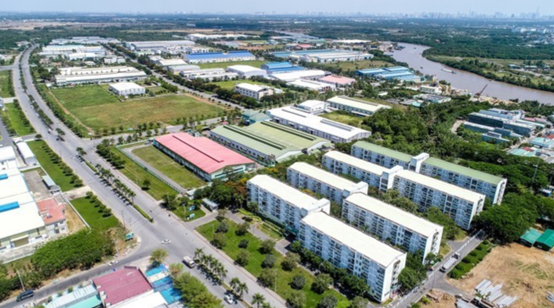
Teo said that Singapore's Frasers Property (Vietnam) is studying the establishment of a research center to serve the semiconductor industry and is preparing land for this demand. Against the backdrop of Vietnam becoming an investment destination for the semiconductor industry, industrial real estate developers are constantly preparing various resources.
Semiconductor manufacturing is positioned as a driving force for Vietnam's development into a prosperous country. Savills Viet Nam expects Vietnam's semiconductor industry to exceed US$6.16 billion by the end of 2024, turning Vietnam into an important manufacturing hub for many global semiconductor companies.
Some Dutch semiconductor companies have also begun to invest in Vietnam, BE Semiconducter Industries N.V has obtained an investment certificate for the Ho Chi Minh City Hi-Tech Park, and the first phase of the project has invested more than VND 115 billion for investment and leasing of factories.
Recently, Hon Hai Precision Industry Co., Ltd. (Foxconn) announced a US$383 million project in Nam Son-Ha Lam Industrial Park, Bac Ninh Province, Vietnam. This is a project to produce, assemble and process printed circuit boards (PCBs), with an average annual output of 279 products, covering an area of 14.26 hectares, with an investment of more than 9.4 trillion VND (about 383.3 million US dollars) recently.
Thomas Rooney, senior director of commercial leasing at Savills Vietnam, says the demand for investment in semiconductor production and assembly has led to an increase in demand for factories and industrial zones that meet the requirements of the semiconductor industry for infrastructure, services such as high-speed internet and efficient water treatment systems.
The customers who lease industrial real estate in the southern provinces are mainly engaged in the rubber, plastics, food and beverage industries, while the northern provinces are mainly engaged in computers, electronic and electrical products, etc. Therefore, Thomas Rooney believes that the development of the semiconductor investment wave will inject impetus into the development of industrial real estate in the north.
Savills Vietnam also believes that in order to attract capital inflows into industrial real estate, local governments and enterprises need to improve policy mechanisms, infrastructure and human resources to better meet the more stringent needs of the industry. Mr. Thomas Rooney said that the semiconductor industry needs a huge amount of electricity. Therefore, Vietnam needs to move forward with the implementation of large-scale energy infrastructure projects.
Recently, the Vietnam Software and Information Technology Service Association established the Semiconductor Industry Development Committee, which aims to bring together experts, enterprises and partners to jointly promote the development of this industry through training activities. knowledge dissemination and dissemination; strengthen cooperation and docking; It is recommended that governments at all levels create favorable conditions for domestic and foreign investors.
Truong Gia Binh, Chairman of the Vietnam Software and Information Technology Service Association, delivered a speech at the seminar on "Semiconductor Industry Development Cooperation" within the framework of the Vietnam-Asia DX Summit 2024 organized by the Vietnam Software and Information Technology Service Association (VINASA) in Hanoi on May 29The great opportunities presented by the global semiconductor market and the trend that Vietnamese companies are actively participating in this ecosystem were introduced.
Due to the "heat" of the semiconductor product ecosystem, countries around the world are increasing their investment in this field. Therefore, Vietnam also needs to develop a concrete strategy to seize this opportunity.
Nguyen Thi Lai Juan, deputy director of the National Innovation Center of the Ministry of Planning and Investment of Vietnam, said that in the world, the compound annual growth rate of the chip market has remained at the level of 14% for 20 consecutive years, and is expected to become a trillion-dollar industry by 2030. It is expected that the demand for talent in the semiconductor field will continue to increase. Therefore, more attention should be paid to the training and supply of human resources in Vietnam's semiconductor industry.
According to the "Human Resource Development Plan for the Semiconductor Industry by 2030 and Long-term Vision to 2050" formulated by the Ministry of Planning and Investment, the demand for talents in Vietnam's semiconductor industry is about 50,000.
Nguyen Thi Gi, Deputy Director of the Information Technology Industry Bureau of the Ministry of Communications and Media, said that in order to solve the semiconductor problem, Vietnam should not only focus on training, but also attract enterprises to invest in Vietnam's semiconductor market.
Creating a supportive ecosystem for chip manufacturers will help Vietnam attract more large production groups to invest in Vietnam, which will make Vietnam's semiconductor chip industry more robust.
The development opportunities and potential of Vietnam's semiconductor industry are huge. Therefore, Viet Nam needs to address its institutional and policy deficiencies. At the same time, we will accelerate human resource training efforts and further expand collaboration and investment opportunities in the semiconductor ecosystem.

